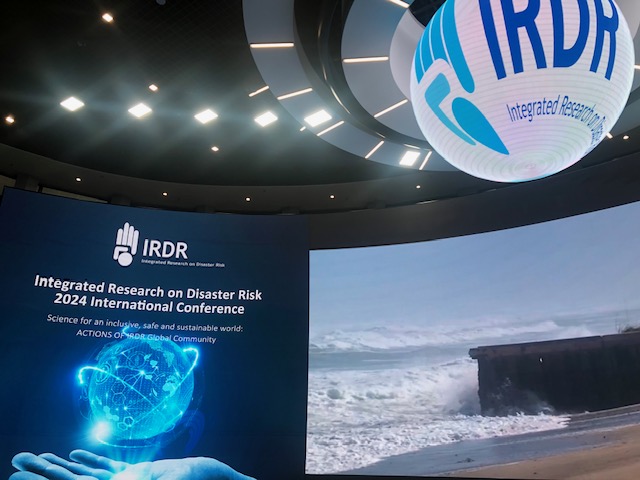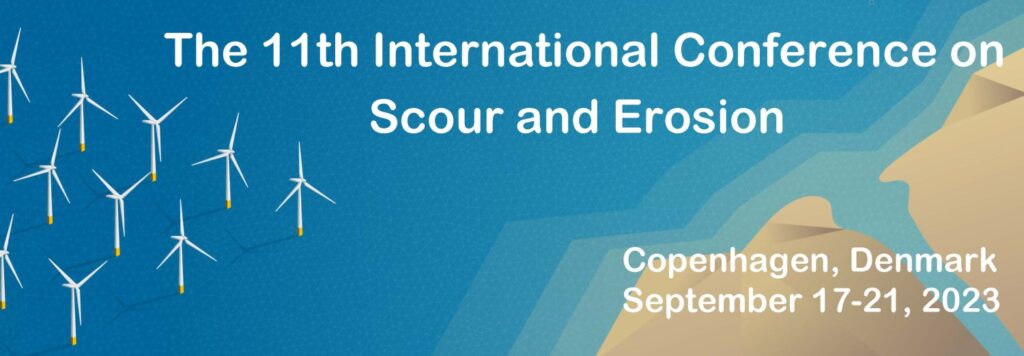
Open symposium of the Science Council of Japan
Submarine geohazards and offshore wind developments
Date and time: 10:00-18:00 on 14 November 2024
Place: Roppongi, Japan and online
Program
https://ds0n.cc.yamaguchi-u.ac.jp/~kawaken/TGSG/241028OpenSymposium2024je.pdf
—— Detailed PROGRAM: PPT file and movies are available—–
Open Symposium of the Science Council of Japan
Submarine Geohazards and Offshore Wind Development
1. Organizers:
Subcommittee on Energy and Science and Technology, Committee on Engineering, Science Council of Japan, IUGS Subcommittee, Committee on Earth and Planetary Sciences, Science Council of Japan
2. Co-organizers:
IUGS, Japan Geoscience Union
3. Supporters:
Japanese Geotechnical Society, International Association for Tsunami Disaster Prevention, Japan Society of Exploration Geophysicists, The Society of Study for Submarine Geological Risk, International Consortium on Landslides, National Taiwan University, Japan Society of Civil Engineers, Japan Wind Energy Society, Center for Environmental Information Science, The Engineering Academy of Japan
4. Date and time:
Thursday, November 14, 2024, 10:00-18:00
5. Venue:
Auditorium of the Science Council of Japan and online distribution
6. Purpose of the event:
In Europe, the US and other countries, the development of offshore wind power generation is progressing and it is now playing a major role in renewable energy. Development of offshore wind power generation is also progressing in Japan. However, in active marginal areas such as Taiwan, Japan, Philippines and so on, the seafloor topography is steep and the continental shelf is narrow, limiting the development area. In addition, there are submarine geohazard risks in coastal areas such as submarine liquefaction and mud volcanoes. For the sustainable operation of offshore wind power generation, developers need to recognize the existence of seafloor geohazard risks and carry out development based on appropriate plans. In this symposium, experts and developers will gather to discuss seafloor multi-geohazards and offshore wind power development.
Registration site
https://www.kiso.co.jp/sssgr/topics/events/entry-1155.html
Contact: yasu-okubo@jcom.home.ne.jp
7. Agenda
Chairperson: Chikako Iwaki (Associate Member of the Science Council of Japan)
10:00 Objective of the event: Yasukuni Okubo (Associate Member of the Science Council of Japan)
Session 1: Case Studies of Submarine Geohazard Events (Convener: Shinji Sassa)
10:10 Submarine Geohazards with the Risk to Offshore Wind
Shinji Sassa (Port and Airport Research Institute, National Institute of Maritime, Port and Aviation Technology)
10:30 Recent Advances in Understanding Turbidity Currents
Hajime Naruse (Kyoto University)
10:50 Recent Advances in Understanding Submarine Landslides and Tsunamis
David Tappin (British Geological Survey)
11:10 Recent Advances in the Mitigation of Scour in Offshore Wind
Andreas Roulund, (Ørsted)
Break (20 min)
Session 2: Submarine Geological and Geophysical Data Archives (Convener: Yukari Kido)
11:50 Necessity of local risk assessment with wide-area geological trends in mind using existing data such as topography, underground cross sections, and grain size distribution
Tomoyuki Sato (Geological Survey of Japan, AIST)
12:10 Use for hazard evaluation and data archive of bathymetric datasets
Hiroki Minami (Japan Coast Guard)
12:30 Submarine Geological and Geophysical Data Archives
Vicki Ferrini (Lamont-Doherty Earth Observatory, Columbia University)
https://ds0n.cc.yamaguchi-u.ac.jp/~kawaken/TGSG/Vicki2024SCJ.mp4
12:50 Seabed2030 and Hunga Tonga-Hunga Ha’apai eruption bathymetry expedition
Kevin Mackay (National Institute of Water and Atmospheric Research)
Lunch (60 min)
Session 3: Requirements of offshore geological and geophysical surveys to properly characterize submarine geohazard risks (Convener: Jun Matsushima)
14:10 Risk and Uncertainty: Geophysical exploration for geological assessment
Jun Matsushima (University of Tokyo)
14:30 Required marine geological, geophysical and geotechnical surveys for offshore wind farm development in Taiwan
Char-Shine Liu (National Taiwan University)
https://ds0n.cc.yamaguchi-u.ac.jp/~kawaken/TGSG/LiuCS2024SCJOWF.pdf
Session 4: Global review of submarine geohazard risks to offshore renewable energy
(Convener: Kiichiro Kawamura; Yamaguchi University)
14:50 Potential submarine geohazard on the Kumano-nada continental slope, West Japan: Consideration of factors that cause submarine landslides
Toshiya Kanamatsu (Japan Agency for Marine-Earth Science and Technology)
15:10 Geological framework and possible geohazards in central Taiwan Strait
Jih-Hsin Chang (National Taiwan University)
15:30 The experience of the Italian Marine Geology Research community in standardized geohazard feature mapping on the Italian Seas」
Francesco Latino Chiocci (Geologia Marina Dipartimento Scienze della Terra Università La Sapienza)
https://ds0n.cc.yamaguchi-u.ac.jp/~kawaken/TGSG/MagicJapan2024.pptx
Break 10 min.
16:00「Opening remarks」 Maria Rose Petrizzo(IUGS vice-President)
Session 5: International Capacity Building (Convener: Ayano Takeuchi; Toho University)
16:10 The Aura Centre for Doctoral Training in Offshore Wind Energy
Robert Dorrell (University of Hull)
https://ds0n.cc.yamaguchi-u.ac.jp/~kawaken/TGSG/Dorrell2024SCJ.mp4
16:30 The Geology of Wind Power: from the second largest wind economy in the mid-continent US to the offshore challenge
Nicholas Hayman (University of Oklahoma)
https://ds0n.cc.yamaguchi-u.ac.jp/~kawaken/TGSG/Hayman2024SCJ.mp4
16:50 The Research Institute for Volcanology and Risk Assessment (IVAR) and its potential as a training platform
José Manuel Pacheco (IVAR – Instituto de Investigação em Vulcanologia e Avaliação de Riscos, Universidade dos Açores)
Panel discussion: Towards a guideline
17:10 Panelists: Shinji Sassa, Yukari Kido, Jun Matsushima, Kiichiro Kawamura, Ayano Takeuchi
17:50 Closing remarks
Harue Masuda (Associate Member of the Science Council of Japan)
Field Trip
Date: 15 (Fri) and 16 (Sat) November
Place: Miura Peninsula
Guide: Yujiro Ogawa (Professor Emeritus, University of Tsukuba)
Contact: kiichiro@yamaguchi-u.ac.jp
Deadline for registration: 30 October, 2024
Field observation:
1) Miocene to Pliocene of accretionary prism along the Sagami trough plate subduction boundary. Sedimentary rocks derived mainly from Izu volcanic arc.
2) Uplifted benches and coastal terraces due to subduction earthquake during recent 100 kyears.
3) Evidence of various types of sedimentation and deformation due to accretionary prism formation, particularly by earthquakes, submarine landslides by discussion either liquefaction, fluidization, or diapirism. Many interesting structures are seen.
4) People’s life styles by fisheries and sightseeing, and preparedness.
https://www.jwea.or.jp/news/1899/
https://www.kiso.co.jp/news/entry-1156.html
https://x.com/jimbunshoin/status/1839805090653422012
https://j-desc.org/event/20241114_opensymposium/
https://jsce.jp/pro/taxonomy/term/3488
https://jsce.jp/pro/taxonomy/term/2091
https://segj.or.jp/topics/2024/09/post-234.html

IRDR2024 International Conference
Integrated Research on Disaster Risk (IRDR) 2024 International Conference has been held on 22-23 October 2024 at The Aerospace Information Research Institute (AIR), Chinese Academy of Science, Beijing China. The IRDR is an international program between International Science Council (ISC) and United Nations for Disaster Risk Reduction (UNDRR).
The IRDR Phase II has started since 2023, which was the same year of the mid-term review of the implementation of the SENDAI Framework and the other UN Agreement for 2030. The missions of the new phase are to mobilize science for the reduction of all types of disaster risk; building resilience and reducing vulnerability by integrating risk science with climate change adaptation and mitigation; and archiving the Sustainable Development Goals (SDGs). This mission echoes the mid-term review recommendations, and target toward IRDR’s new vision on ushering in an inclusive, safe and sustainable world by promoting a better understanding of disaster risk and effective use of risk science in decision-making.
In this conference, we have opened a scientific session of Landslides-induced Tsunami and their Disaster Risk Reduction at Parallel Session 4 (Room B714) on Wednesday 22nd October. Landslides beneath waters such as dams, lakes, coastal seas and continental slopes are potential be caused as Tsunami disasters tectonically and/or non-tectonically. Recent research has been discussed how climate changes introduce unstable land conditions and potential causes of natural disasters. We will discuss non-tectonic disasters from multidisciplinary points of views, such as Oceanography, Marine Geology, Earth System Sciences, Geoengineering, Information Sciences, Social Sciences and others. The organizers were International Union of Geological Sciences (IUGS), International Union for Quaternary Research (INQUA) and International Consortium on Landslides (ICL), and the conveners were Hiroshi Kitazato (IUGS), Anika Braun (INQUA) and Shinji Sassa (ICL). Shinji Sassa and Kiichiro Kawamura talked Multiple Geohazards and Submarine geological risks and renewable energy in this session, respectively.

37th International Geological Congress (IGC 2024):
August 25-31, 2024 (http://www.igc2024korea.org/)
Two sessions: August 27
Offshore renewable energy systems and submarine geohazards (Shinji
Sassa, Yasukuni Okubo)
Our Tasks on Global Submarine Geohazard issue to our future earth
(Kiichiro Kawamura, Char-Shine Liu)
TGSG Business meeting: August 27
Science topics on TGSG and others (Kiichiro Kawamura and others)
Online presentation (Silvia Chacon-Barrantes and others)
Announcements

Online July meeting
San Jose 15:00-16:00 3 July Wednesday
Honolulu 11:00-12:00 3 July
Ponta Delgada 21:00-22:00 3 July
London 22:00-23:00 3 July
Taipei 5:00-6:00 4 July Thursday
Tokyo 6:00-7:00 4 July
Tentative Agenda
1) IGC-TGSG session and business meeting plan with travel supports
2) SCJ-TGSG symposium program and schedule
3) Small talk: The Ocean Decade Tsunami Program, Silvia Chacon-Barrantes
(National University of Costa Rica)
4) Other items (Special Publication)
Small talk by Dr. rer. nat. Silvia Chacon, Costa Rica
Ocean Decade Tsunami Program (ODTP)
https://iugs-tgsg.com/wp-content/uploads/2024/07/2024-07-03-ODTP-IUGS.pdf

TGSG meeting 26-27 February 2024
Small talk by Professor Zakaria Hamimi of Benha University, Egypt
Tectonics and Geohazards in the East Mediterranean -Red Sea Region
https://ds0n.cc.yamaguchi-u.ac.jp/~kawaken/TGSG/240227Hamimi.mp4
26/Feb.: Honolulu 23:00
27/Feb.: Auckland 22:00; Tokyo 18:00; Taipei 17:00; Perth 17:00; Bangkok 16:00; Cairo 11:00; Tromsö 10:00; London 9:00; Ponta Delgada 8:00; Santiago 6:00; New York 4:00; Sanjose Oklahoma City 3:00
IUGS-EC meeting at Nairobi 18-23 February 2024

November meeting at 18:00 (Japan time) 22 November 2023
Presentation: Foundation installation in sandwave fields. Field observations of sandwave regeneration and sediment infill, Andreas Roulund (Orsted)
The 14th Congress of the International Association of Engineering Geology and Environment (IAEG2023) will be held at Chengdu, China from September 21 to 27, 2023, and will have Theme 06: Marine Engineering Geology, Marine Geo-environment and Disasters, which will then be held in conjunction with the 3rd International Conference on Marine Engineering Geology (ISMEG2023) (Yonggang Jia, Ocean University of China). http://www.iaeg2023.org/

TGSG meeting: Oslo/Copenhagen (0:00 am), Alexandria (0:00 am), Taipei (6:00 am), Tokyo/Dili (7:00 am), Wellington (10:00 am) on September 26 (Tue), 2023
Honolulu (12:00 pm), Oklahoma City (17:00 pm), New York (18:00 pm), Santiago (18:00 pm), Ponta Delgada (22:00 pm), London/Edinburgh (23:00 am) on September 25 (Mon), 2023
Please check your local time from this site (https://www.timeanddate.com/worldclock/converter.html?iso=20230925T220000&p1=248).
Presentation Offshore Wind Farm Activity and Submarine Slope Failure on Australian continental margins (Professor Chris Elders,
School of Earth & Planetary Sciences Curtin University): https://ds0n.cc.yamaguchi-u.ac.jp/~kawaken/TGSG/230926Australian windfarms and geohazards.pdf
Presentation Coastal and Marine Hazards in the Philippines (Dr. Leo T Armada, National Institute of Geological Sciences, University of the Philippines): https://ds0n.cc.yamaguchi-u.ac.jp/~kawaken/TGSG/230926IUGS TGSG_Coastal and Marine Hazards in the Philippines_Armada_Sept2023.pdf

11th International Conference on Scour and Erosion (ICSE-11):
The International Committee on Scour and Erosion (ISSMGE Technical Committee on Scour and Erosion), has been organizing the ICSE conference series, and will have ICSE-11 in Denmark, September 17-21, 2023. Scour and Erosion is one of the key themes of the TGSG (Shinji Sassa, PARI). https://icse11.org/

TGSG meeting: Oslo/Copenhagen (0:30 am), Alexandria (0:30 am), Taipei (6:30 am), Tokyo/Dili (7:30 am), Wellington (10:30 am) on Jun 27 (Tue), 2023
Honolulu (12:30 pm), Oklahoma City (17:30 pm), New York (18:30 pm), Santiago (18:30 pm), Ponta Delgada (22:30 pm), London/Edinburgh (23:30 am) on Jun 26 (Mon), 2023
Presentation Brief overview of Columbia University’s Lamont-Doherty Earth Observatory (LDEO)-based activities relevant to IUGS-TGSG (Dr. Vicki Ferrini, Senior Research Scientist, Columbia University): https://ds0n.cc.yamaguchi-u.ac.jp/~kawaken/TGSG/20230626_IUGS-TGSG.pdf

TGSG-EC meeting, London/Edinburgh (0 am), Oslo/Copenhagen (1 am), Alexandria (1 am), Taipei (7 am), Tokyo/Dili (8 am), Wellington (11 am) on May 2, Honolulu (13 pm), Oklahoma City (18 pm), New York (19 pm), Santiago (19 pm), Ponta Delgada (23 pm) on May 1, 2023
Presentation Taiwan Submarine Geohazards (Professor Char-Shine Liu, National Taiwan University): https://ds0n.cc.yamaguchi-u.ac.jp/~kawaken/TGSG/20230502_1st_EC_meeting_Taiwan_presentation.pdf

Chair meeting, 16-17 March 2023
We have been approved at 78th IUGS Executive Committee meeting in Belfast (UK), 14-17 February 2023.